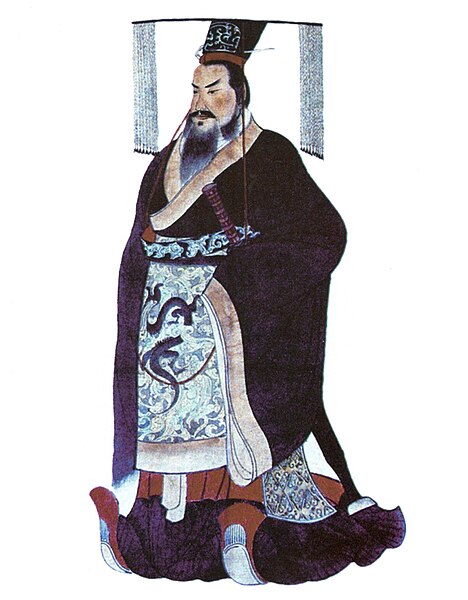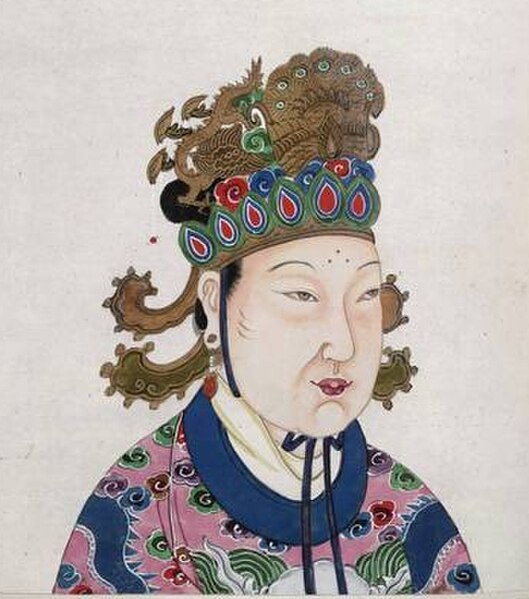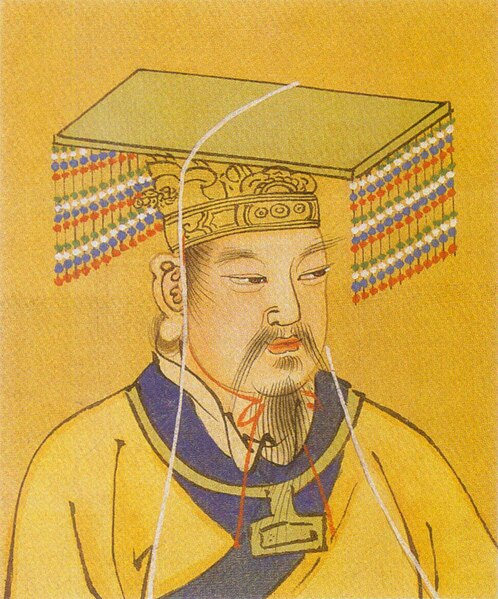Emperor Wen of Chen (陳文帝), personal name Chen Qian (陳蒨), also called Chen Tanqian (陳曇蒨), courtesy name Zihua (子華), was the second emperor of the Chinese Chen dynasty. He was a nephew of the founding monarch, Emperor Wu, and after Emperor Wu's death in 559, the officials supported him to be emperor since Emperor Wu's only surviving son, Chen Chang, was detained by the Northern Zhou dynasty. At the time he took the throne, Chen had been devastated by war during the preceding Liang dynasty, and many provinces nominally loyal to him were under control of relatively independent warlords. During his reign, he consolidated the state against warlords, and he also seized territory belonging to claimants to the Liang throne, Xiao Zhuang and the Emperor Xuan of Western Liang, greatly expanding Chen's territory and strength.
Tang dynasty portrait of Emperor Wen by Yan Liben
The two pixiu statues outside Emperor Wen's tomb, believed to represent Emperor Wen and his favorite lover, Han Zigao.
Throughout Chinese history, "Emperor" was the superlative title held by the monarchs who ruled various imperial dynasties. In traditional Chinese political theory, the emperor was the "Son of Heaven", an autocrat with the divine mandate right to rule all under Heaven. Emperors were worshiped posthumously under an imperial cult. The lineage of emperors descended from a paternal family line constituted a dynasty, and succession in most cases theoretically followed agnatic primogeniture.
Qin Shi Huang, the first emperor of China (r. 221–210 BC)
Qin Shi Huang escaping assassination (3rd century AD)
An 18th century depiction of Wu Zetian, the only female emperor of China
Yellow Emperor






